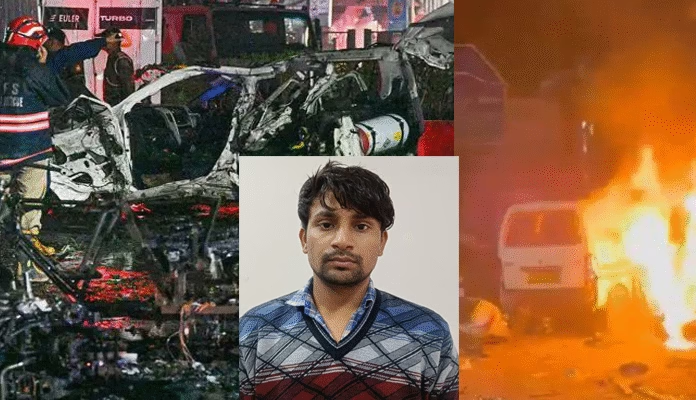
 by Ajay Kumar
by Ajay Kumar
The long-standing deliberations within the Bharatiya Janata Party (BJP) regarding the appointment of a new Uttar Pradesh state president seem to be nearing a decisive point. After receiving a relatively weaker mandate in the 2024 Lok Sabha elections in Uttar Pradesh, the need for a restructuring of the organization has become evident. So far, no new state president has been announced after Bhupendra Chaudhary, and this delay has raised questions among party workers. Meanwhile, the increasing activity of Deputy Chief Minister Keshav Prasad Maurya, his frequent meetings with top leaders in Delhi, and the OBC equation have brought his name to the center of discussions.
BJP’s performance in the Lok Sabha elections in Uttar Pradesh was concerning. In 2019, the party, along with allies, won 64 seats, but this dropped to just 36 in 2024. Out of these, BJP alone secured 33 seats, while the SP-Congress alliance captured 43 seats clearly indicating that the opposition’s social strategy has made inroads into BJP’s traditional vote bank. The shift in OBC and Dalit votes toward SP’s PDA (Backward, Dalit, Minority) formula was particularly notable.
BJP strategists have now realized that if the party wants to score a hat-trick victory in the 2027 assembly elections, the organization must be revitalized. This is why the party is looking for a face that not only brings organizational experience but is also capable of aligning social equations. In this context, Keshav Prasad Maurya has once again emerged as the most suitable name. His meetings on July 8 with Union Home Minister Amit Shah and Defense Minister Rajnath Singh in Delhi have fueled speculations. These meetings are not being seen as mere courtesy calls but are being linked to the party’s organizational restructuring and upcoming election strategies. Maurya himself has confirmed that the discussions focused on strategies for winning 2027. It was under Maurya’s leadership in the 2017 assembly elections that BJP made history by winning 312 out of 403 seats. At that time, he was the state president and played a key role in strengthening the party at the grassroots level.
Maurya’s greatest strength is his background as a grassroots BJP worker, who rose through the ranks of the Rashtriya Swayamsevak Sangh and the Vishwa Hindu Parishad before joining the party mainstream. His journey from a regular worker to Deputy Chief Minister makes him highly popular among party workers. This is why his name is being seriously considered to reinvigorate and energize the organization.
Keshav Maurya’s name becomes even more relevant for the BJP right now because the party must once again firmly align with the OBC community. BJP is well aware that the opposition, especially the Samajwadi Party, is making every effort to woo the OBC vote bank. Akhilesh Yadav has projected the PDA formula in a way that prominently highlights OBC and Dalit groups. In this situation, BJP must respond in kind. And this task can best be achieved by a strong OBC leader like Keshav Maurya, who enjoys wide social acceptability.
However, the decision on the state president post will not be based solely on social equations. Balancing between organization and governance also plays a crucial role. Party sources say that it is already decided that Yogi Adityanath will be projected again as the Chief Ministerial face in 2027. But from time to time, there have also been voices within the party that Keshav Maurya should be declared a contender for the CM’s post. In such a scenario, it becomes essential for the party to bring Maurya into the organization to keep him out of the power race and clear the path for Yogi Adityanath.
The central leadership’s thinking behind this entire strategy is to find a leader who can not only manage social alliances but also strengthen the organization. Keshav Maurya fits this criteria perfectly. This is why Amit Shah recently referred to Maurya as a “dear friend” at an event, while calling Yogi Adityanath a “popular Chief Minister.” This indicates that the party leadership wants to promote both leaders in a balanced manner.
Meanwhile, several other names are also being considered within the BJP. From the OBC category, names like Swatantradev Singh, Amar Pal Maurya, Dharmpal Singh Lodhi, B.L. Maurya, and Baburam Nishad are under discussion. From the Dalit community, Baby Rani Maurya’s name has emerged. For a Brahmin face, former Deputy CM Dr. Dinesh Sharma, Laxmikant Bajpai, and Union Minister Jitin Prasada are being considered. If the party aims to strengthen its hold on western Uttar Pradesh, leaders like Jitin Prasada and Mahesh Sharma could be options.
However, BJP has often followed a strategy of assigning key roles to leaders who are not publicly discussed much. Recent appointments of Chief Ministers in Rajasthan, Madhya Pradesh, and Delhi support this trend. Therefore, it would be premature to say that Maurya’s name is finalized, but it is certain that he is leading the race.
Senior BJP leader Dr. Dinesh Sharma has clarified that the party follows a fixed process for appointments. First, elections are held in all state units, then the national president is elected, and after that, the state presidents are appointed. He also added that elections have been completed in most states, so the appointments of the national and state presidents can happen at any time.
There are four key reasons behind the delay in the appointment of a state president in Uttar Pradesh. First, from which caste or community will the new president be? Second, will they be from Purvanchal or western UP? Third, can they effectively counter the opposition’s PDA strategy? And fourth, will Chief Minister Yogi Adityanath be comfortable with the appointment? According to sources, the party is deeply contemplating all four aspects and a decision is expected soon.
So far, BJP’s strategy has been to prepare the organization in advance for the 2026 panchayat elections and the 2027 assembly elections. This is why the party is not rushing the appointment of the state president. But it is also true that an organizational vacuum cannot persist for long. The role of a state president is crucial in providing direction to workers. This is why pressure is building on the party to finalize the appointment soon.
If Keshav Maurya is reappointed as state president, the BJP will be able to achieve multiple objectives simultaneously. First, the organization will get leadership with both experience and mass appeal. Second, the OBC community will receive a clear message that the party values their trust. Third, a balance between power and organization will be maintained, ensuring no challenge to Yogi Adityanath’s leadership. All eyes are now on Delhi, from where the major decisions of the BJP originate. It will be interesting to see whether the BJP places its trust once again in Keshav Maurya or surprises everyone with a new face. One thing is certain the appointment of the state president will be the BJP’s first major signal towards its 2027 strategy. And possibly, it will mark the first step toward revitalizing the organization and mounting a direct challenge to the opposition.



